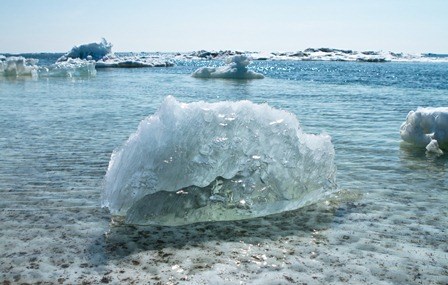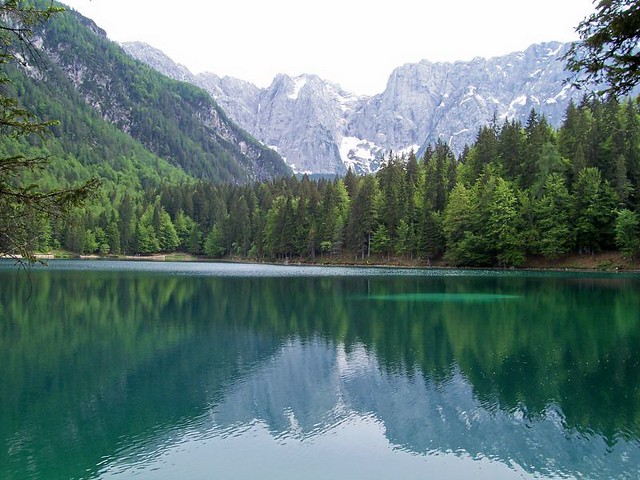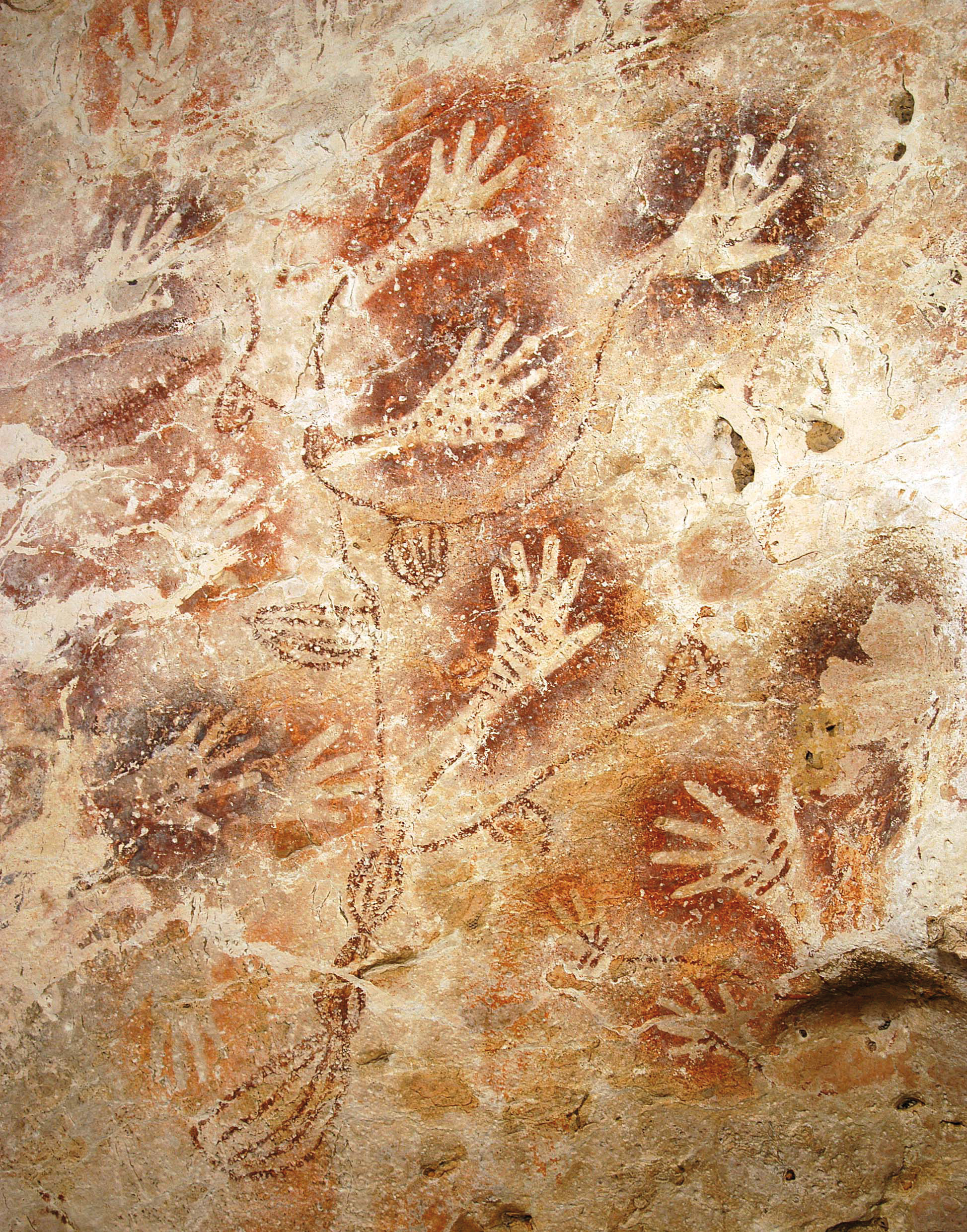Environmental & Science Education
STEM
Art and Environment
Archaeology
Edward Hessler
A wall painting found in a cave on the island of Sulawesi (Indonesia) has been found to have been painted about 40,000 years before present. This is currently the oldest date for figurative rock art in the world. There are older rock paintings but they do not represent forms that are recognizably from life. Paintings in this cave depict three chronologically distinct phases and are comprised of different styles.
Paintings from the oldest phase are characterized by large in-filled, reddish orange colored paintings of animals, primarily of the Bornean banteng (
Bos javenicus), a type of wild cattle that is still found in the wild today. In addition, extinct animals and hand-stencils are found.
Paintings from the second and younger phase are comprised of dark purple (mulberry) hand stencils, some of which are "partially filled in with painted lines, dashes, dots and small abstract signs that possibly represent tattoos or other marks of social identification and in some instances, hand stencils are linked by painted mulberry lines...which perhaps represent kinship connections." There are thread-like human figures known as anthropomorphs, some in small groups with elaborate headdresses/spear throwers and others in narrative hunting or other ritual (dancing?) scenes. These are known as "Datu Saman."
Paintings in the third phase, the most recent, consists of anthropomorphs--boats and geometric designs usually in black pigments. These have been found in other cave sites in Indonesia.
One of the remarkable findings is that this rock art spanned at least 20,000 years with painters returning to paint again or to paint over previous work.
The paper reporting these findings is found in in a multi-authored research letter in
Nature. In addition to a map locating the research site (p. 2) there are several figures showing the art work. Extended Figure 1a, shows art from the three phases (p. 7). On p. 8 are shown some enlarged Datu Saman, on p. 15 are found some filled in animal paintings, and on p. 16 are found anthropomorph figures from Australia. There are other figures showing other analyses but the text is required to better understand them.
and in some
instances hand stencils are linked together by painted mulberry lines
that form intricate tree-like motifs, which perhaps symb
On the basis of the superimposition of different styles, the rock art
of the Sangkulirang–Mangkalihat Peninsula comprises at least three
chronologically distinct phases
9
. The oldest style is characterized by
large in-filled, reddish-orange-coloured paintings of animals—mainly
the Bornean banteng (Bos javanicus lowi), a type of wild cattle that
is still extant on the island (Extended Data Fig.1), but also includes
what may be now-extinct taxa
16
as well as hand stencils produced
using pigment of the same distinctive hue (Extended Data Fig.1).
The second phase is dominated by hand stencils that are dark purple
(‘mulberry’) in colour, which are often clustered into distinct composi-
tions (Extended Data Fig.1). Many of these stencils are partly in-filled
with painted lines, dashes, dots and small abstract signs that possibly
represent tattoos or other marks of social identification, and in some
instances hand stencils are linked together by painted mulberry lines
that form intricate tree-like motifs, which perhaps symbolize kinship
connections. Some older reddish-orange hand stencils appear to have
been ‘retouched’ with mulberry paint to create similar in-filled designs
and tree-like motifs (Extended Data Fig.1). This phase also features
small, carefully executed mulberry-coloured paintings of anthropo-
morphs (Extended Data Fig.2). These elegant, thread-like human
figures—henceforth, ‘Datu Saman’following the established term for
this style
6
—are sometimes shown in small groups, and are usually
portrayed with elaborate headdresses and an array of other objects of
material culture that includes possible spear throwers. Some figures
are depicted in narrative scenes as hunting or pursuing small deer or as
engaged in enigmatic social or ritual activities (for example, ‘dancing’;
Extended Data Fig.2). The final rock art phase is characterized by
anthropomorphs, boats and geometric designs that are usually exe-
cuted in black pigments (Extended Data Fig.1). This rock art style is
the only one that has thus far been documented elsewhere in Borneo;
it is found at other locations in Indonesia and may be associated with
the movement of Asian Neolithic farmers into the region from about
4ka, or more recently
17,18
On the basis of the superimposition of different styles, the rock art
of the Sangkulirang–Mangkalihat Peninsula comprises at least three
chronologically distinct phases
9
. The oldest style is characterized by
large in-filled, reddish-orange-coloured paintings of animals—mainly
the Bornean banteng (Bos javanicus lowi), a type of wild cattle that
is still extant on the island (Extended Data Fig.1), but also includes
what may be now-extinct taxa
16
as well as hand stencils produced
using pigment of the same distinctive hue (Extended Data Fig.1).
The second phase is dominated by hand stencils that are dark purple
(‘mulberry’) in colour, which are often clustered into distinct composi-
tions (Extended Data Fig.1). Many of these stencils are partly in-filled
with painted lines, dashes, dots and small abstract signs that possibly
represent tattoos or other marks of social identification, and in some
instances hand stencils are linked together by painted mulberry lines
that form intricate tree-like motifs, which perhaps symbolize kinship
connections. Some older reddish-orange hand stencils appear to have
been ‘retouched’ with mulberry paint to create similar in-filled designs
and tree-like motifs (Extended Data Fig.1). This phase also features
small, carefully executed mulberry-coloured paintings of anthropo-
morphs (Extended Data Fig.2). These elegant, thread-like human
figures—henceforth, ‘Datu Saman’following the established term for
this style
6
—are sometimes shown in small groups, and are usually
portrayed with elaborate headdresses and an array of other objects of
material culture that includes possible spear throwers. Some figures
are depicted in narrative scenes as hunting or pursuing small deer or as
engaged in enigmatic social or ritual activities (for example, ‘dancing’;
Extended Data Fig.2). The final rock art phase is characterized by
anthropomorphs, boats and geometric designs that are usually exe-
cuted in black pigments (Extended Data Fig.1). This rock art style is
the only one that has thus far been documented elsewhere in Borneo;
it is found at other locations in Indonesia and may be associated with
the movement of Asian Neolithic farmers into the region from about
4ka, or more recently
17,18

 Environmental & Science Education
Environmental & Science Education




